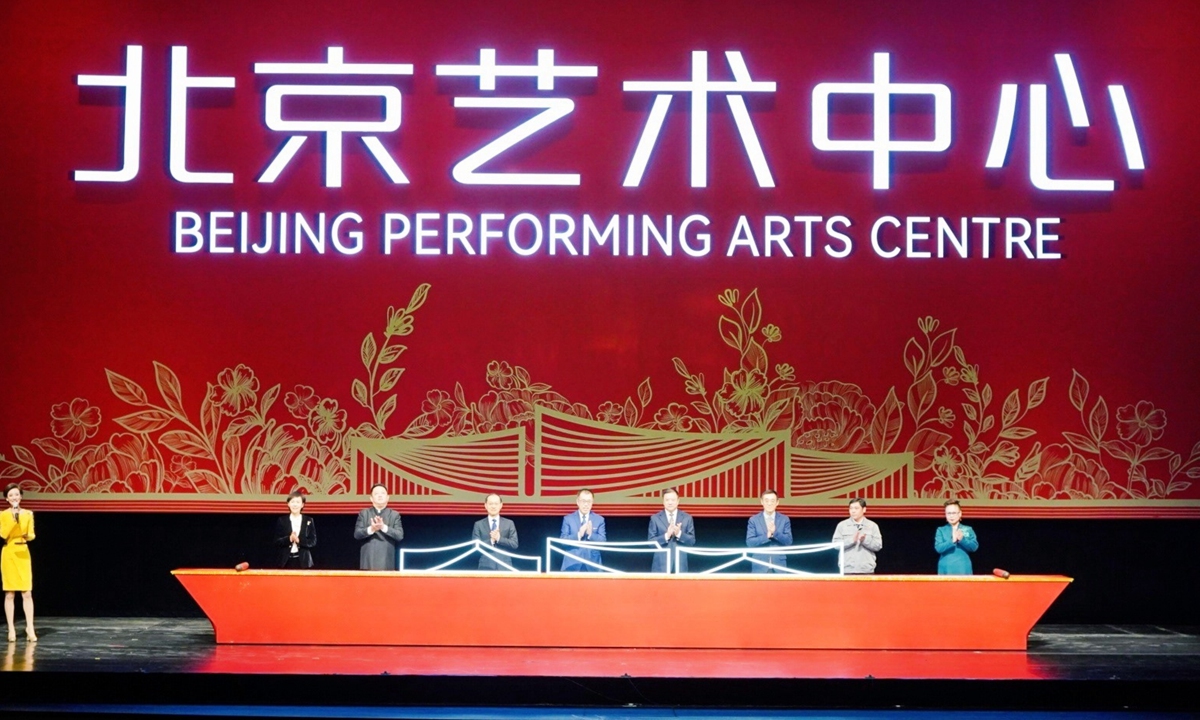
Photo: Courtesy of Beijing Performing Arts Centre
Beijing's sub-center of Tongzhou district is set to dazzle the public with a cultural extravaganza as two cultural landmarks have been put into operation.
The Grand Canal Museum of Beijing is scheduled to open on Wednesday while the Beijing Performing Arts Centre (BPAC) was officially opened to the public on Friday with a stunning opening ceremony featuring a multitude of artists and a traditional ethnic opera show.
The centre is a new addition to the capital's National Centre for the Performing Arts (NCPA), which has developed into the world's largest art complex with three facilities in a single city. The center's opening ceremony is also part of the activities to celebrate the 16th anniversary of NCPA.
Nestled next to the Beijing-Hangzhou Grand Canal in Tongzhou, the newly established cultural gem took the shape of an ancient granary and is dubbed the "cultural granary" of Beijing.
Wang Ning, head of the NCPA, said at the opening ceremony that the launch of the new cultural landmark of the city will usher the NCPA into a new era of development and the center is committed to providing world-class art performances to the public.
"Next year, the BPAC will host 300 performances and 300 art-related activities. In the future, we will also hold an international canal art festival, a musical art festival, among others. People will not only be able to enjoy the classic plays at NCPA, but also have the opportunity to enjoy modern art such as musicals and immersive performances at the new centre," said Wang.
Li Zhixiang, a deputy head of NCPA, told the Global Times that BPAC is an integration of art and technology and will become a new cultural hub of the capital.
"The center's capacity is as big as NCPA. The stage design and structure are aligned with the NCPA so that the performances could be staged in both theaters without the trouble of re-adapting to a new venue," said Li.
In addition, the new center is more inclusive, presenting a wider range of artistic performances like modern drama, musical drama and immersive shows to entice the younger generation, Li noted.
Covering an area of 125,000 square meters, the state-of-art architecture consists of three separate structures, including four indoor theaters (opera house, concert hall, theater, and multi-function theater) and one outdoor amphitheater.
The designers of BPAC drew inspiration from the ancient granaries and supplies-transporting ships of Tongzhou, earning it the moniker "cultural granary." The façade is made of 4,134 aluminum panels, which, when lit up by the sun, helps create an effect resembling a rising curtain of light and shade.
In November, the architecture, which boasts the world's largest immersive sound reinforcement system, was awarded the Autodesk Design & Make Awards, one of the most influential international awards in the field of engineering digitalization.
Xu Xiaozhong, one of the theatre directors and former president of the Central Academy of Drama, told the Global Times that the launch of the centre signals a big step in allowing people to share the fruits of cultural development.
"The center is located on the bank of the centuries-old Grand Canal, which creates an art space where man and nature coexist harmoniously. I think what is particularly valuable is that the centre is a majestic art palace, an endeavor made by the NCPA to reach out to people and give the public a better access to arts," said Xu.
An ethnic opera orchestrated by NCPA name The Canal Ballad was staged on Friday to retell the story of the centuries-old canal.
"The opera was impressive and offered me insights into traditional culture. The centre is a venue to enjoy top drawer performances, especially for residents living in the eastern part of Beijing," a resident surnamed Chen told the Global Times.
The Beijing-Hangzhou Grand Canal carries great social importance. Starting from Hangzhou, the grand water belt is a major part of China's South-to-North Water Transfer Project. It has promoted the country's overall economic growth while allowing folk and cultural traditions to be exchanged between the northern and southern parts of China.
URL: https://www.seeglobalnews.com/read-2923.html